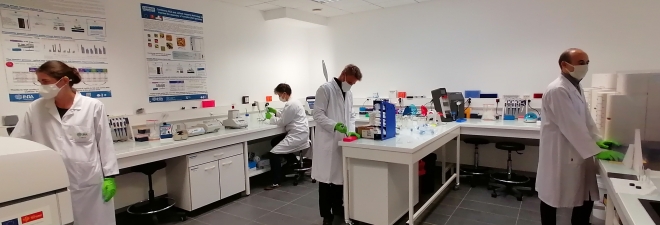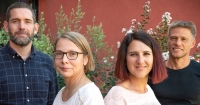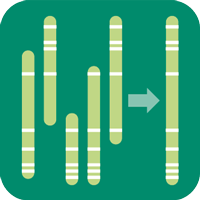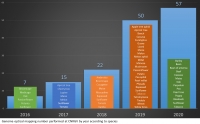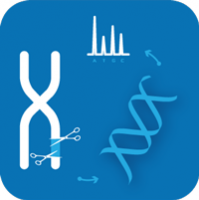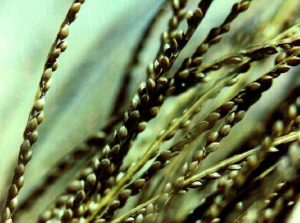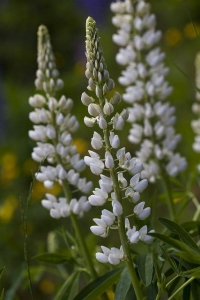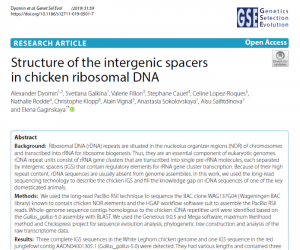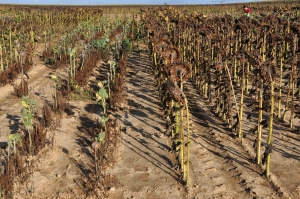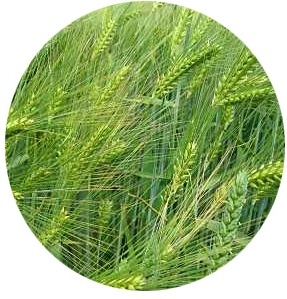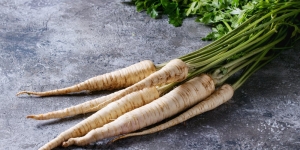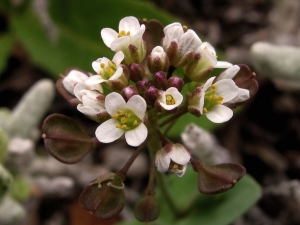CNRGV updates 2020
The Covid-19 crisis has made the year 2020 of the CNRGV unprecedented and has mobilized our ability to adapt over and over. After a period of containment and telecommuting in spring, the team returned to the laboratory in May focusing on resuming ongoing projects. The commitment of all the members of the CNRGV's team allowed delivering most of the projects' results on time. Beyond the difficulties experienced, this episode allowed us to strengthen relationships with our collaborators. We sincerely thank you for the trust you showed us this particular year.
What’s new at CNRGV ?
New direction of the CNRGV since August 2019Since the departure of Hélène Bergès, the CNRGV is governed by a collegiate leadership composed by: Sonia Vautrin (Director), Arnaud Bellec (Associate Director), Laetitia Lançon (Administrative manager), Stéphane Cauet (IT Manager) The new collegial management team's mission is to maintain and develop the CNRGV's services to the plant genomics community. |
Services
|
| Genome Optical mappingThe genome optical mapping is a premiere strategy to complement NGS data to produce top quality genome assemblies and to study variation in genomes structure between or within species.The CNRGV has developed its experience for 5 years on plant genomes optical mapping and produced and analyzed more than 150 Optical map on more of 50 species. |
|
|
|
| 2 examples of optical mapping results recovery through publications Fonio millet genome unlocks African orphan crop diversity for agriculture in a changing climate. High-quality genome sequence of white lupin provides insight into soil exploration and seed quality. contacts: cnrgv-bionano@inrae.fr |
|
|
| Certified Service Provider of Bionano genomics (California-USA)– in the process of certificationThe CNRGV is currently in the process of certification by Bionano Genomics in order to recognize as "Certified Service Provider". We plan to achieve the process by the end of 2020. Given the missions and expertise of the CNRGV, the certification will cover plant and animal optical maps production. The certification is a validation by Bionano Genomics of the high level of service quality of our platform. It guaranties our customers of our mastery of the technology and the full management from the reception of the material to the delivery of results, including the extraction of very high molecular weight DNA, the production of the optical map on Bionano Genomics' Saphyr equipment and the data analysis. It also includes upstream advices for the setting up of the project and the preparation of the plant material, and explanations of the results obtained. The certification recognises the skills of the operators. |
|
| Large DNA fragment captureWe have developped and optimized two methods to capture large DNA fragments in order to study the diversity of a region of agronomic interest within multiples cultivars. These methods have been tested on various plant species (sunflower, corn, zucchini, vine, banana, wheat) and have proved their efficiency to capture and sequence regions of interest from 20 to 200 kb on panels of several tens genotypes. The projects of large DNA fragments capture are carried out in the framework of collaboration (research contract). |
|
| Plant material productionWe have installed a culture chamber to have a complete control on the plant material used for DNA extraction. It allows us to apply optimal conditions to grow the seeds and harvest the plant material at the right time. Thus we can obtain the best quality of High Molecular Weight DNA for genome optical mapping, genome sequencing or to implement CATCH protocols. |
New publications
Last publications of work recognition performed at CNRGV. Thanks to our collaborators for all of these fruitful research!
New team members 2019
Charlotte trained as engineer in genomics and data analysis. She is in charge of bioinformatics for genome sequencing projects. She performs the assembly of NGS data and their combination with optical maps data and genetic maps data to deliver high quality scaffolded genomes. In parallel, she benchmarks new tools to improve constantly her assembly pipeline.
Some news from our last collaborators, trainees, colleagues
|
| Luiz Augusto Cauz dos Santos, who has spent 10 months on the 2 last years at CNRGV, obtained the title of “Doctor in genetics and plant breeding” on April 2020. He defended his thesis on “chloroplast genome evolution in passiflora. He has presented, among other results, works he achieved @CNRGV. Currently, he is continuing his career as Postdoctoral researcher in the Plant Ecological Genomics group at Department of Botany and Biodiversity Research from University of Vienna - Austria Publication resulting to its thesis works
|
|
| Wassim Rhalloussi has worked as bioinformatics trainee for 6 months. He developed protocols and tools for the Comparison of plant genomes using optical maps and the analysis of structural variations. This course was a training module of his last year of his cursus to obtain the degree of engineer in software development and data analysis of the @ Aix-Marseille University – France. Now, he is working at the " epitranscriptomics and sequencing plateform" EpiRNA-Seq - University of Lorraine – France
|
|
| Charlie Jan who was in charge of the service for the medium preparation of laboratory medium and decontamination facilities, has left in May to pursue his professional project at "Vendée environment and food laboratory" - France |

